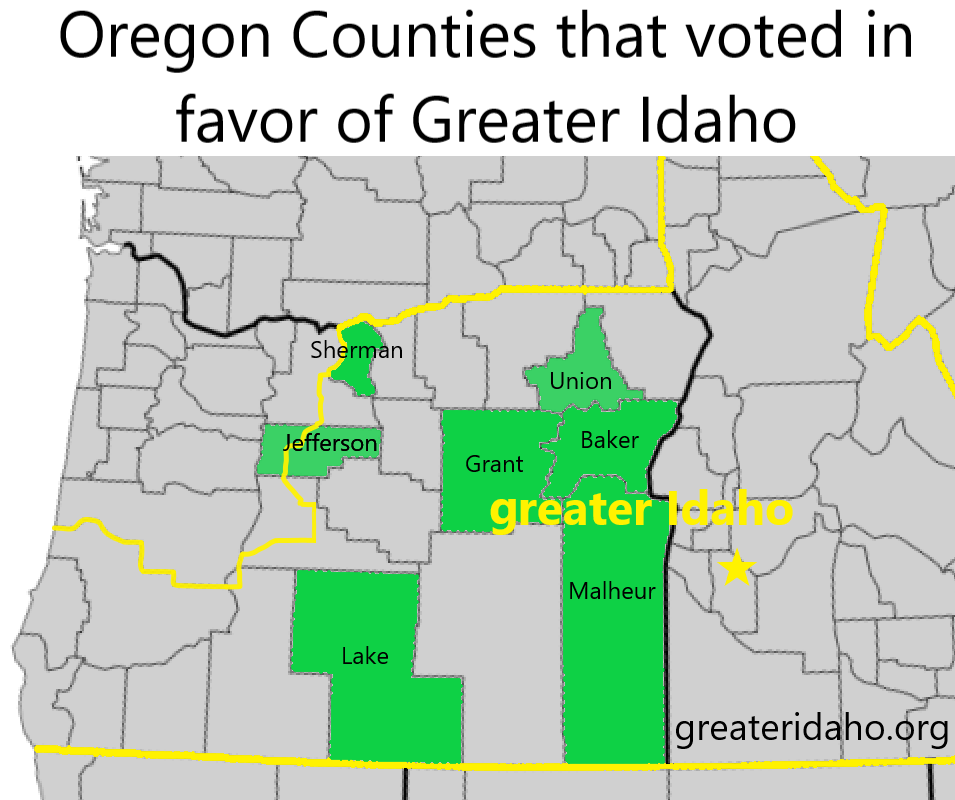As many people in the United States celebrated Independence Day today, Sunday, July 4, 2021, the residents of seven counties in the state of Oregon are hoping that one day — if and when you perhaps decide to travel to where they are based — you will instead be visiting the state of Idaho.
Why Seven Counties Voted to Leave Oregon For Idaho
In addition to Union County and Jefferson County voting back on Tuesday, November 3, 2020 in favor of seceding from Oregon and being incorporated into the state of Idaho, Sherman County, Lake County, Grant County, Baker County, and Malheur County — all of which are located in eastern Oregon — also voted on Tuesday, May 18, 2021 for becoming a part of the state of Idaho by moving the border between the two states to extend the jurisdiction of Idaho over the rural and conservative counties of eastern and southern Oregon. None of the counties voted against secession, as the average in favor was approximately 62 percent.
“This election proves that rural Oregon wants out of Oregon. If Oregon really believes in liberal values such as self-determination, the Legislature won’t hold our counties captive against our will,” according to this article which is posted at the official Internet web site of Citizens for Greater Idaho — of which Mike McCarter is the current president. “If we’re allowed to vote for which government officials we want, we should be allowed to vote for which government we want as well.”
Citizens for Greater Idaho claims that “Northwestern Oregon is embarking on social experiments: a cultural revolution that rural counties want no part of. Eastern Oregon and Southern Oregon have normal American cultures and values. This area votes exactly like Idaho in national elections.” The proposal of Citizens for Greater Idaho “would put 18 south and east Oregon counties and three partial Oregon counties under the governance of Idaho instead of Oregon. This is 76% of the land area of Oregon and 21% of the population of Oregon. As this area had a 2019 population of 873,000, and Idaho had a population of 1.8 M, it would increase the population of Idaho by 49% in phase 1.”
Should the movement for the secession of southern and eastern Oregon into the state of Idaho be successful, Idaho would become the third largest state in the United States in terms of area.
This is not the first effort of some of the aforementioned areas of Oregon to secede. Cascadia defines the Pacific Northwest of the United States and Canada — incorporating the province of British Columbia and the states of Washington, Oregon, parts of Idaho, southern Alaska, and northern California through the watersheds of the Columbia River, Fraser River, and Snake River valleys — and is seeking to either become a more autonomous region or secede from the United States and Canada altogether.
Summary
In addition to Cascadia, there apparently has been a race as to which region, district or territory will become the next state of the United States first — the District of Columbia becoming Washington Douglass Commonwealth; the proposed state of Jefferson; or the commonwealth of Puerto Rico, where 61 percent of its citizens voted in a referendum in support of the financially-strapped island to become a state in 2012…
…and those are only four of a number of possible candidates for statehood.
One of the reasons why we have borders around the world is political; and the proposed secession of the aforementioned counties from Oregon to Idaho is no exception.
Happy Independence Day 2021…
Source: Citizens for Greater Idaho.
